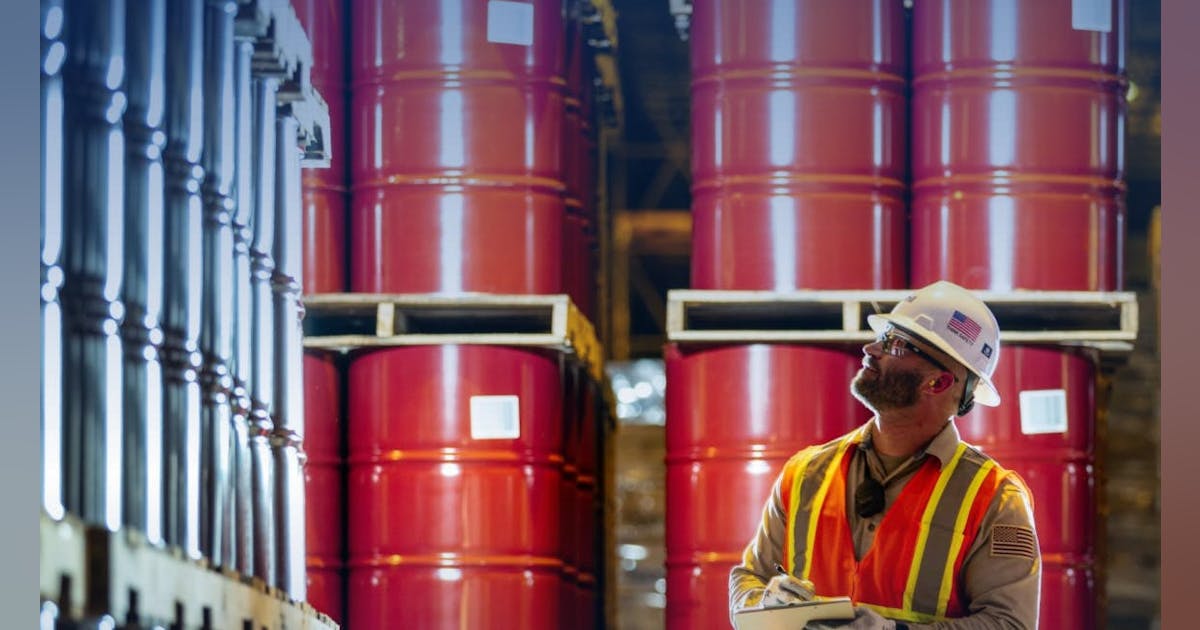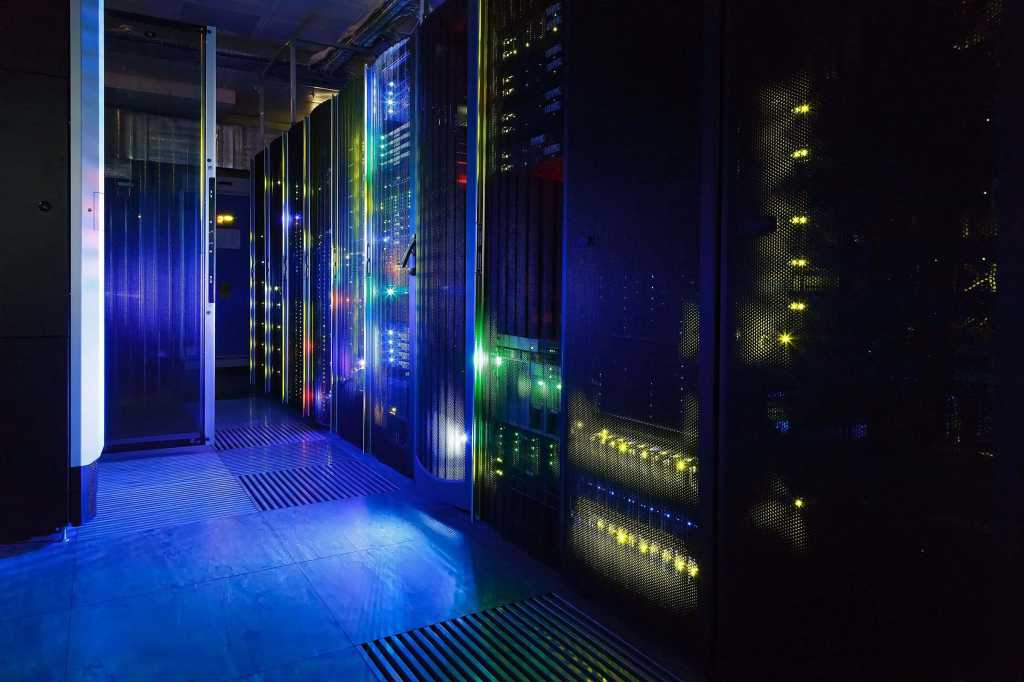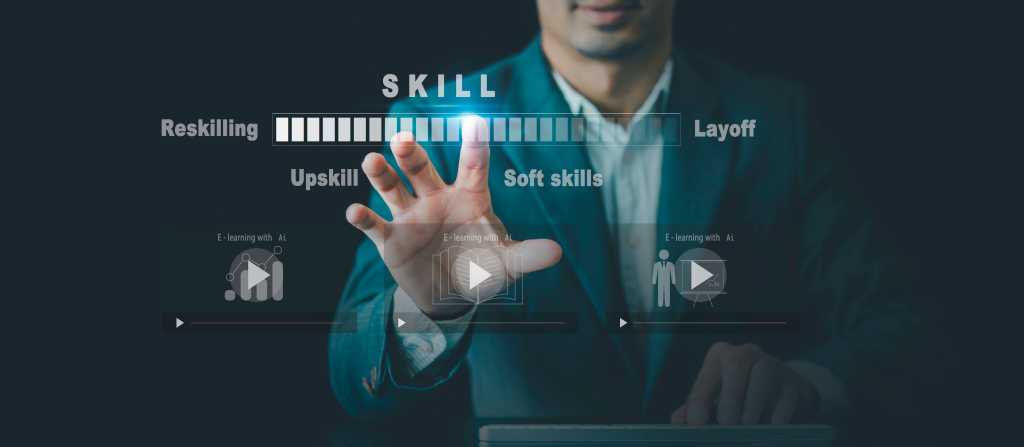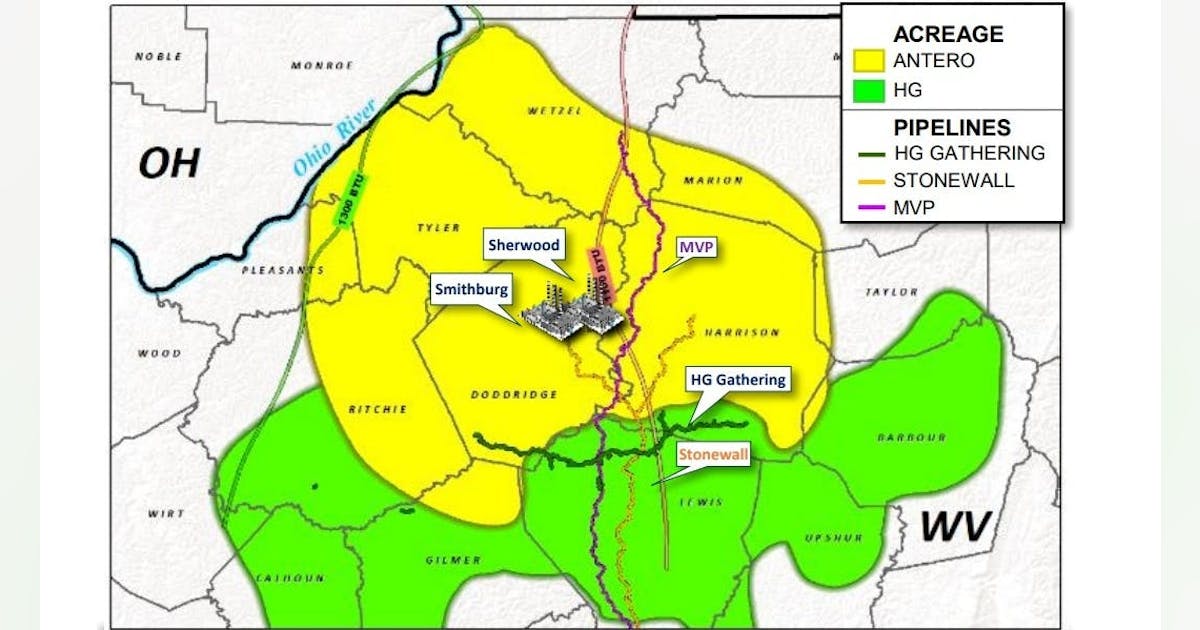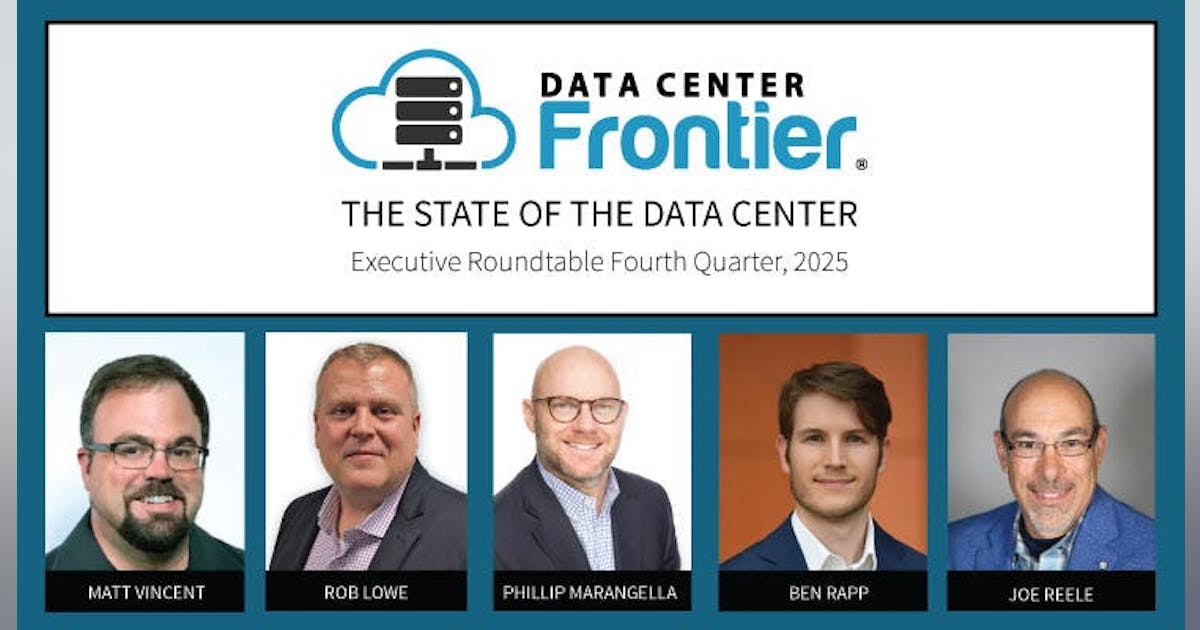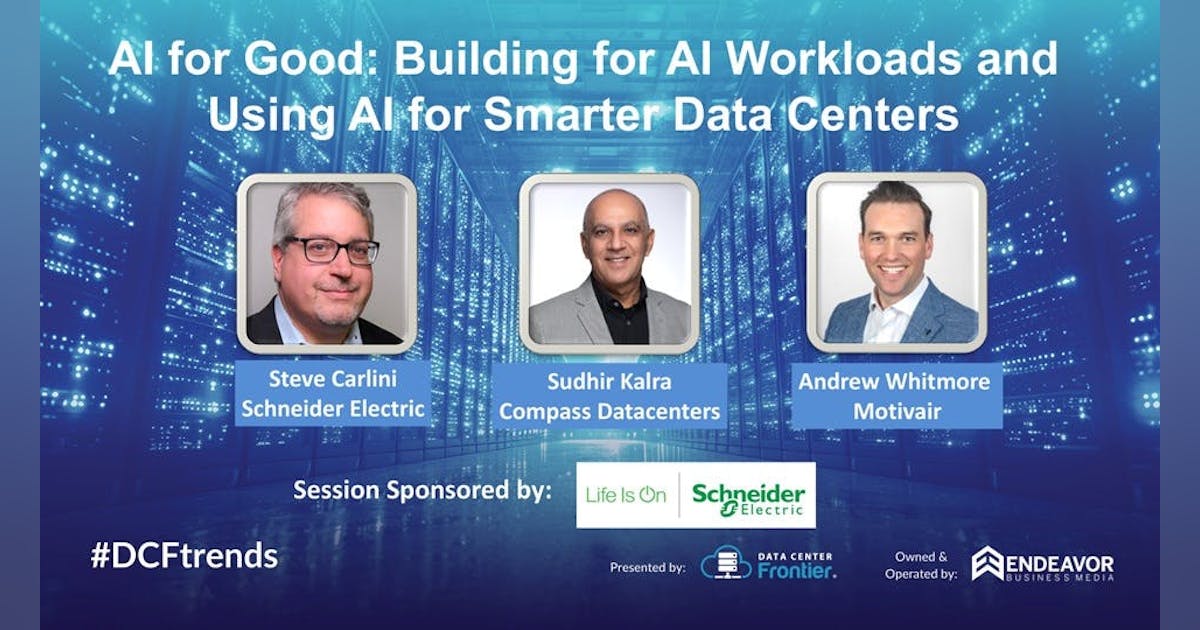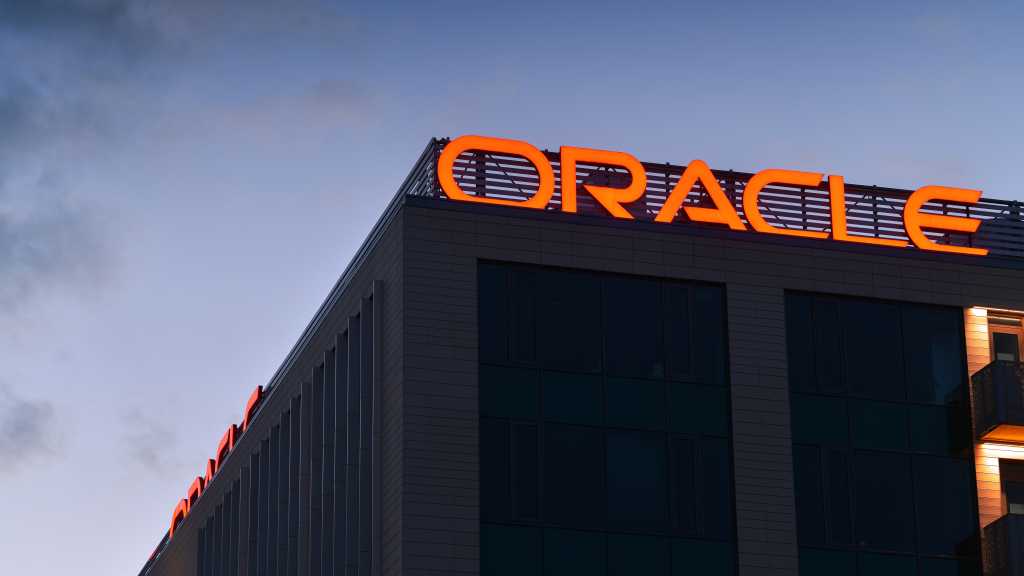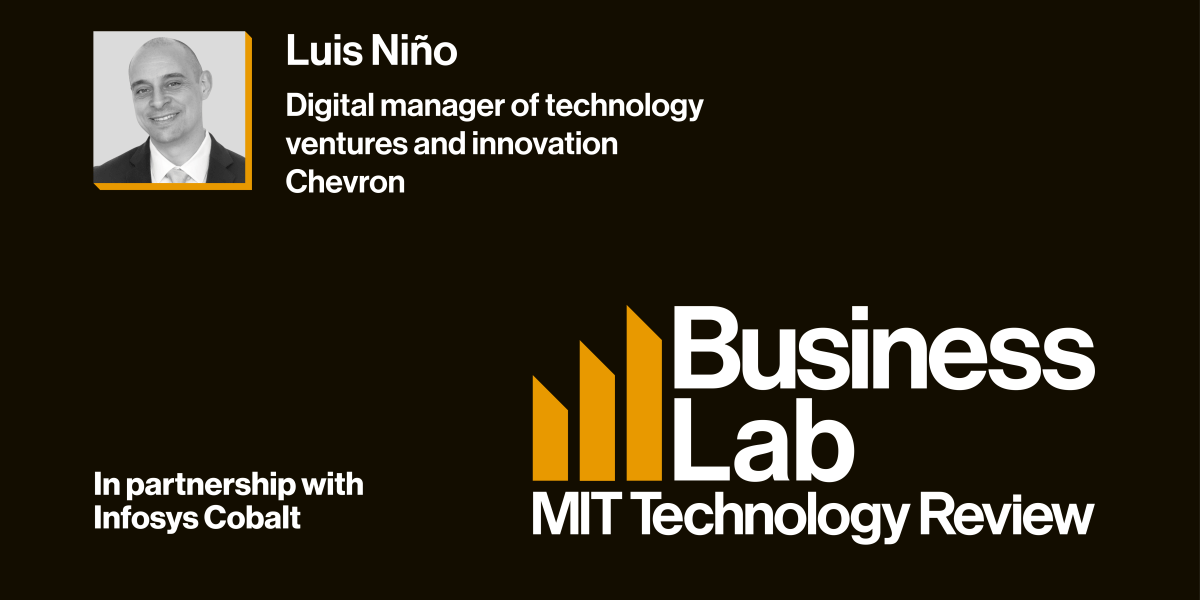
In partnership withInfosys Cobalt
In the rapidly evolving landscape of digital innovation, staying adaptable isn’t just a strategy—it’s a survival skill. “Everybody has a plan until they get punched in the face,” says Luis Niño, digital manager for technology ventures and innovation at Chevron, quoting Mike Tyson.
Drawing from a career that spans IT, HR, and infrastructure operations across the globe, Niño offers a unique perspective on innovation and how organizational microcultures within Chevron shape how digital transformation evolves.
Centralized functions prioritize efficiency, relying on tools like AI, data analytics, and scalable system architectures. Meanwhile, business units focus on simplicity and effectiveness, deploying robotics and edge computing to meet site-specific needs and ensure safety.
“From a digital transformation standpoint, what I have learned is that you have to tie your technology to what outcomes drive results for both areas, but you have to allow yourself to be flexible, to be nimble, and to understand that change is constant,” he says.
Central to this transformation is the rise of industrial AI. Unlike consumer applications, industrial AI operates in high-stakes environments where the cost of errors can be severe.
“The wealth of potential information needs to be contextualized, modeled, and governed because of the safety of those underlying processes,” says Niño. “If a machine reacts in ways you don’t expect, people could get hurt, and so there’s an extra level of care that needs to happen and that we need to think about as we deploy these technologies.”
Niño highlights Chevron’s efforts to use AI for predictive maintenance, subsurface analytics, and process automation, noting that “AI sits on top of that foundation of strong data management and robust telecommunications capabilities.” As such, AI is not just a tool but a transformation catalyst redefining how talent is managed, procurement is optimized, and safety is ensured.
Looking ahead, Niño emphasizes the importance of adaptability and collaboration: “Transformation is as much about technology as it is about people.” With initiatives like the Citizen Developer Program and Learn Digital, Chevron is empowering its workforce to bridge the gap between emerging technologies and everyday operations using an iterative mindset.
Niño is also keeping watch over the convergence of technologies like AI, quantum computing, Internet of Things, and robotics, which hold the potential to transform how we produce and manage energy.
“My job is to keep an eye on those developments,” says Niño, “to make sure that we’re managing these things responsibly and the things that we test and trial and the things that we deploy, that we maintain a strict sense of responsibility to make sure that we keep everyone safe, our employees, our customers, and also our stakeholders from a broader perspective.”
This episode of Business Lab is produced in association with Infosys Cobalt.
Full Transcript
Megan Tatum: From MIT Technology Review, I’m Megan Tatum and this is Business Lab, the show that helps business leaders make sense of new technologies coming out of the lab and into the marketplace.
Our topic today is digital transformation, from back office operations to infrastructure in the field like oil rigs, companies continue to look for ways to increase profit, meet sustainability goals, and invest in the latest and greatest technology.
Two words for you: enabling innovation.
My guest is Luis Niño, who is the digital manager of technology ventures, and innovation at Chevron. This podcast is produced in association with Infosys Cobalt.
Welcome, Luis.
Luis Niño: Thank you, Megan. Thank you for having me.
Megan: Thank you so much for joining us. Just to set some context, Luis, you’ve had a really diverse career at Chevron, spanning IT, HR, and infrastructure operations. I wonder, how have those different roles shaped your approach to innovation and digital strategy?
Luis: Thank you for the question. And you’re right, my career has spanned many different areas and geographies in the company. It really feels like I’ve worked for different companies every time I change roles. Like I said, different functions, organizations, locations I’ve had since here in Houston and in Bakersfield, California and in Buenos Aires, Argentina. From an organizational standpoint, I’ve seen central teams international service centers, as you mentioned, field infrastructure and operation organizations in our business units, and I’ve also had corporate function roles.
And the reason why I mentioned that diversity is that each one of those looks at digital transformation and innovation through its own lens. From the priority to scale and streamline in central organizations to the need to optimize and simplify out in business units and what I like to call the periphery, you really learn about the concept first off of microcultures and how different these organizations can be even within our own walls, but also how those come together in organizations like Chevron.
Over time, I would highlight two things. In central organizations, whether that’s functions like IT, HR, or our technical center, we have a central technical center, where we continuously look for efficiencies in scaling, for system architectures that allow for economies of scale. As you can imagine, the name of the game is efficiency. We have also looked to improve employee experience. We want to orchestrate ecosystems of large technology vendors that give us an edge and move the massive organization forward. In areas like this, in central areas like this, I would say that it is data analytics, data science, and artificial intelligence that has become the sort of the fundamental tools to achieve those objectives.
Now, if you allow that pendulum to swing out to the business units and to the periphery, the name of the game is effectiveness and simplicity. The priority for the business units is to find and execute technologies that help us achieve the local objectives and keep our people safe. Especially when we are talking about our manufacturing environments where there’s risk for our folks. In these areas, technologies like robotics, the Internet of Things, and obviously edge computing are currently the enablers of information.
I wouldn’t want to miss the opportunity to say that both of those, let’s call it, areas of the company, rely on the same foundation and that is a foundation of strong data management, of strong network and telecommunications capabilities because those are the veins through which the data flows and everything relies on data.
In my experience, this pendulum also drives our technology priorities and our technology strategy. From a digital transformation standpoint, what I have learned is that you have to tie your technology to what outcomes drive results for both areas, but you have to allow yourself to be flexible, to be nimble, and to understand that change is constant. If you are deploying something in the center and you suddenly realize that some business unit already has a solution, you cannot just say, let’s shut it down and go with what I said. You have to adapt, you have to understand behavioral change management and you really have to make sure that change and adjustments are your bread and butter.
I don’t know if you know this, Megan, but there’s a popular fight happening this weekend with Mike Tyson and he has a saying, and that is everybody has a plan until they get punched in the face. And what he’s trying to say is you have to be adaptable. The plan is good, but you have to make sure that you remain agile.
Megan: Yeah, absolutely.
Luis: And then I guess the last lesson really quick is about risk management or maybe risk appetite. Each group has its own risk appetite depending on the lens or where they’re sitting, and this may create some conflict between organizations that want to move really, really fast and have urgency and others that want to take a step back and make sure that we’re doing things right at the balance. I think that at the end, I think that’s a question for leadership to make sure that they have a pulse on our ability to change.
Megan: Absolutely, and you’ve mentioned a few different elements and technologies I’d love to dig into a bit more detail on. One of which is artificial intelligence because I know Chevron has been exploring AI for several years now. I wonder if you could tell us about some of the AI use cases it’s working on and what frameworks you’ve developed for effective adoption as well.
Luis: Yeah, absolutely. This is the big one, isn’t it? Everybody’s talking about AI. As you can imagine, the focus in our company is what is now being branded as industrial AI. That’s really a simple term to explain that AI is being applied to industrial and manufacturing settings. And like other AI, and as I mentioned before, the foundation remains data. I want to stress the importance of data here.
One of the differences however is that in the case of industrial AI, data comes from a variety of sources. Some of them are very critical. Some of them are non-critical. Sources like operating technologies, process control networks, and SCADA, all the way to Internet of Things sensors or industrial Internet of Things sensors, and unstructured data like engineering documentation and IT data. These are massive amounts of information coming from different places and also from different security structures. The complexity of industrial AI is considerably higher than what I would call consumer or productivity AI.
Megan: Right.
Luis: The wealth of potential information needs to be contextualized, modeled, and governed because of the safety of those underlying processes. When you’re in an industrial setting, if a machine reacts in ways you don’t expect, people could get hurt, and so there’s an extra level of care that needs to happen and that we need to think about as we deploy these technologies.
AI sits on top of that foundation and it takes different shapes. It can show up as a copilot like the ones that have been popularized recently, or it can show up as agentic AI, which is something that we’re looking at closely now. And agentic AI is just a term to mean that AI can operate autonomously and can use complex reasoning to solve multistep problems in an industrial setting.
So with that in mind, going back to your question, we use both kinds of AI for multiple use cases, including predictive maintenance, subsurface analytics, process automation, and workflow optimization, and also end-user productivity. Each one of those use cases obviously needs specific objectives that the business is looking at in each area of the value chain.
In predictive maintenance, for example, we monitor and we analyze equipment health, we prevent failures, and we allow for preventive maintenance and reduced downtime. The AI helps us understand when machinery needs to be maintained in order to prevent failure instead of just waiting for it to happen. In subsurface analysis, we’re exploring AI to develop better models of hydrocarbon reservoirs. We are exploring AI to forecast geomechanical models and to capture and understand data from fiber optic sensing. Fiber optic sensing is a capability that has proven very valuable to us, and AI is helping us make sense of the wealth of information that comes out of the whole, as we like to say. Of course, we don’t do this alone. We partner with many third-party organizations, with vendors, and with people inside subject matter experts inside of Chevron to move the projects forward.
There are several other areas beyond industrial AI that we are looking at. AI really is a transformation catalyst, and so areas like finance and law and procurement and HR, we’re also doing testing in those corporate areas. I can tell you that I’ve been part of projects in procurement, in HR. When I was in HR we ran a pretty amazing effort in partnership with a third-party company, and what they do is they seek to transform the way we understand talent, and the way they do that is they are trying to provide data-driven frameworks to make talent decisions.
And so they redefine talent by framing data in the form of skills, and as they do this, they help de-bias processes that are usually or can be usually prone to unconscious biases and perspectives. It really is fascinating to think of your talent-based skills and to start decoupling them from what we know since the industrial era began, which is people fit in jobs. Now the question is more the other way around. How can jobs adapt to people’s skills? And then in procurement, AI is basically helping us open the aperture to a wider array of vendors in an automated fashion that makes us better partners. It’s more cost-effective. It’s really helpful.
Before I close here, you did reference frameworks, so the framework of industrial AI versus what I call productivity AI, the understanding of the use cases. All of this sits on top of our responsible AI frameworks. We have set up a central enterprise AI organization and they have really done a great job in developing key areas of responsible AI as well as training and adoption frameworks. This includes how to use AI, how not to use AI, what data we can share with the different GPTs that are available to us.
We are now members of organizations like the Responsible AI Institute. This is an organization that fosters the safe use of AI and trustworthy AI. But our own responsible AI framework, it involves four pillars. The first one is the principles, and this is how we make sure we continue to stay aligned with the values that drive this company, which we call The Chevron Way. It includes assessment, making sure that we evaluate these solutions in proportion to impact and risk. As I mentioned, when you’re talking about industrial processes, people’s lives are at stake. And so we take a very close look at what we are putting out there and how we ensure that it keeps our people safe. It includes education, I mentioned training our people to augment their capabilities and reinforcing responsible principles, and the last of the four is governance oversight and accountability through control structures that we are putting in place.
Megan: Fantastic. Thank you so much for those really fascinating specific examples as well. It’s great to hear about. And digital transformation, which you did touch on briefly, has become critical of course to enable business growth and innovation. I wonder what has Chevron’s digital transformation looked like and how has the shift affected overall operations and the way employees engage with technology as well?
Luis: Yeah, yeah. That’s a really good question. The term digital transformation is interpreted in many different ways. For me, it really is about leveraging technology to drive business results and to drive business transformation. We usually tend to specify emerging technology as the catalyst for transformation. I think that is okay, but I also think that there are ways that you can drive digital transformation with technology that’s not necessarily emerging but is being optimized, and so under this umbrella, we include everything from our Citizen Developer Program to complex industry partnerships that help us maximize the value of data.
The Citizen Developer Program has been very successful in helping bridge the gap between our technical software engineer and software development practices and people who are out there doing the work, getting familiar, and demystifying the way to build solutions.
I do believe that transformation is as much about technology as it is about people. And so to go back to the responsible AI framework, we are actively training and upskilling the workforce. We created a program called Learn Digital that helps employees embrace the technologies. I mentioned the concept of demystifying. It’s really important that people don’t fall into the trap of getting scared by the potential of the technology or the fact that it is new and we help them and we give them the tools to bridge the change management gap so they can get to use them and get the most out of them.
At a high level, our transformation has followed the cyclical nature that pretty much any transformation does. We have identified the data foundations that we need to have. We have understood the impact of the processes that we are trying to digitize. We organize that information, then we streamline and automate processes, we learn, and now machines learn and then we do it all over again. And so this cyclical mindset, this iterative mindset has really taken hold in our culture and it has made us a little bit better at accepting the technologies that are driving the change.
Megan: And to look at one of those technologies in a bit more detail, cloud computing has revolutionized infrastructure across industries. But there’s also a pendulum ship now toward hybrid and edge computing models. How is Chevron balancing cloud, hybrid, and edge strategies for optimal performance as well?
Luis: Yeah, that’s a great question and I think you could argue that was the genesis of the digital transformation effort. It’s been a journey for us and it’s a journey that I think we’re not the only ones that may have started it as a cost savings and storage play, but then we got to this ever-increasing need for multiple things like scaling compute power to support large language models and maximize how we run complex models. There’s an increasing need to store vast amounts of data for training and inference models while we improve data management and, while we predict future needs.
There’s a need for the opportunity to eliminate hardware constraints. One of the promises of cloud was that you would be able to ramp up and down depending on your compute needs as projects demanded. And that hasn’t stopped, that has only increased. And then there’s a need to be able to do this at a global level. For a company like ours that is distributed across the globe, we want to do this everywhere while actively managing those resources without the weight of the infrastructure that we used to carry on our books. Cloud has really helped us change the way we think about the digital assets that we have.
It’s important also that it has created this symbiotic need to grow between AI and the cloud. So you don’t have the AI without the cloud, but now you don’t have the cloud without AI. In reality, we work on balancing the benefits of cloud and hybrid and edge computing, and we keep operational efficiency as our North Star. We have key partnerships in cloud, that’s something that I want to make sure I talk about. Microsoft is probably the most strategic of our partnerships because they’ve helped us set our foundation for cloud. But we also think of the convenience of hybrid through the lens of leveraging a convenient, scalable public cloud and a very secure private cloud that helps us meet our operational and safety needs.
Edge computing fills the gap or the need for low latency and real-time data processing, which are critical constraints for decision-making in most of the locations where we operate. You can think of an offshore rig, a refinery, an oil rig out in the field, and maybe even not-so-remote areas like here in our corporate offices. Putting that compute power close to the data source is critical. So we work and we partner with vendors to enable lighter compute that we can set at the edge and, I mentioned the foundation earlier, faster communication protocols at the edge that also solve the need for speed.
But it is important to remember that you don’t want to think about edge computing and cloud as separate things. Cloud supports edge by providing centralized management by providing advanced analytics among others. You can train models in the cloud and then deploy them to edge devices, keeping real-time priorities in mind. I would say that edge computing also supports our cybersecurity strategy because it allows us to control and secure sensitive environments and information while we embed machine learning and AI capabilities out there.
So I have mentioned use cases like predictive maintenance and safety, those are good examples of areas where we want to make sure our cybersecurity strategy is front and center. When I was talking about my experience I talked about the center and the edge. Our strategy to balance that pendulum relies on flexibility and on effective asset management. And so making sure that our cloud reflects those strategic realities gives us a good footing to achieve our corporate objectives.
Megan: As you say, safety is a top priority. How do technologies like the Internet of Things and AI help enhance safety protocols specifically too, especially in the context of emissions tracking and leak detection?
Luis: Yeah, thank you for the question. Safety is the most important thing that we think and talk about here at Chevron. There is nothing more important than ensuring that our people are safe and healthy, so I would break safety down into two. Before I jump to emissions tracking and leak detection, I just want to make a quick point on personal safety and how we leverage IoT and AI to that end.
We use sensing capabilities that help us keep workers out of harm’s way, and so things like computer vision to identify and alert people who are coming into safety areas. We also use computer vision, for example, to identify PPE requirements—personal protective equipment requirements—and so if there are areas that require a certain type of clothing, a certain type of identification, or a hard hat, we are using technologies that can help us make sure people have that before they go into a particular area.
We’re also using wearables. Wearables help us in one of the use cases is they help us track exhaustion and dehydration in locations where that creates inherent risk, and so locations that are very hot, whether it’s because of the weather or because they are enclosed, we can use wearables that tell us how fast the person’s getting dehydrated, what are the levels of liquid or sodium that they need to make sure that they’re safe or if they need to take a break. We have those capabilities now.
Going back to emissions tracking and leak detection, I think it’s actually the combination of IoT and AI that can transform how we prevent and react to those. In this case, we also deploy sensing capabilities. We use things like computer vision, like infrared capabilities, and we use others that deliver data to the AI models, which then alert and enable rapid response.
The way I would explain how we use IoT and AI for safety, whether it’s personnel safety or emissions tracking and leak detection, is to think about sensors as the extension of human ability to sense. In some cases, you could argue it’s super abilities. And so if you think of sight normally you would’ve had supervisors or people out there that would be looking at the field and identifying issues. Well, now we can use computer vision with traditional RGB vision, we can use them with infrared, we can use multi-angle to identify patterns, and have AI tell us what’s going on.
If you keep thinking about the human senses, that’s sight, but you can also use sound through ultrasonic sensors or microphone sensors. You can use touch through vibration recognition and heat recognition. And even more recently, this is something that we are testing more recently, you can use smell. There are companies that are starting to digitize smell. Pretty exciting, also a little bit crazy. But it is happening. And so these are all tools that any human would use to identify risk. Well, so now we can do it as an extension of our human abilities to do so. This way we can react much faster and better to the anomalies.
A specific example with methane. We have a simple goal with methane, we want to keep methane in the pipe. Once it’s out, it’s really hard or almost impossible to take it back. Over the last six to seven years, we have reduced our methane intensity by over 60% and we’re leveraging technology to achieve that. We have deployed a methane detection program. We have trialed over 10 to 15 advanced methane detection technologies.
A technology that I have been looking at recently is called Aquanta Vision. This is a company supported by an incubator program we have called Chevron Studio. We did this in partnership with the National Renewable Energy Laboratory, and what they do is they leverage optical gas imaging to detect methane effectively and to allow us to prevent it from escaping the pipe. So that’s just an example of the technologies that we’re leveraging in this space.
Megan: Wow, that’s fascinating stuff. And on emissions as well, Chevron has made significant investments in new energy technologies like hydrogen, carbon capture, and renewables. How do these technologies fit into Chevron’s broader goal of reducing its carbon footprint?
Luis: This is obviously a fascinating space for us, one that is ever-changing. It is honestly not my area of expertise. But what I can say is we truly believe we can achieve high returns and lower carbon, and that’s something that we communicate broadly. A few years ago, I believe it was 2021, we established our Chevron New Energies company and they actively explore lower carbon alternatives including hydrogen, renewables, and carbon capture offsets.
My area, the digital area, and the convergence between digital technologies and the technical sciences will enable the techno-commercial viability of those business lines. Thinking about carbon capture, is something that we’ve done for a long time. We have decades of experience in carbon capture technologies across the world.
One of our larger projects, the Gorgon Project in Australia, I think they’ve captured something between 5 and 10 million tons of CO2 emissions in the past few years, and so we have good expertise in that space. But we also actively partner in carbon capture. We have joined hubs of carbon capture here in Houston, for example, where we investing in companies like there’s a company called Carbon Clean, a company called Carbon Engineering, and one called Svante. I’m familiar with these names because the corporate VC team is close to me. These companies provide technologies for direct air capture. They provide solutions for hard-to-abate industries. And so we want to keep an eye on these emerging capabilities and make use of them to continuously lower our carbon footprint.
There are two areas here that I would like to talk about. Hydrogen first. This is another area that we’re familiar with. Our plan is to build on our existing assets and capabilities to deliver a large-scale hydrogen business. Since 2005, I think we’ve been doing retail hydrogen, and we also have several partnerships there. In renewables, we are creating a range of fuels for different transportation types. We use diesel, bio-based diesel, we use renewable natural gas, we use sustainable aviation fuel. Yeah, so these are all areas of importance to us. They’re emerging business lines that are young in comparison to the rest of our company. We’ve been a company for 140 years plus, and this started in 2021, so you can imagine how steep that learning curve is.
I mentioned how we leverage our corporate venture capital team to learn and to keep an eye out on what are these emerging trends and technologies that we want to learn about. They leverage two things. They leverage a core fund, which is focused on areas that can seek innovation for our core business for the title. And we have a separate future energy fund that explores areas that are emerging. Not only do they invest in places like hydrogen, carbon capture, and renewables, but they also may invest in other areas like wind and geothermal and nuclear capability. So we constantly keep our eyes open for these emerging technologies.
Megan: I see. And I wonder if you could share a bit more actually about Chevron’s role in driving sustainable business innovation. I’m thinking of initiatives like converting used cooking oil into biodiesel, for example. I wonder how those contribute to that overall goal of creating a circular economy.
Luis: Yeah, this is fascinating and I was so happy to learn a little bit more about this year when I had the chance to visit our offices in Iowa. I’ll get into that in a second. But happy to talk about this, again with the caveat that it’s not my area of expertise.
Megan: Of course.
Luis: In the case of biodiesel, we acquired a company called REG in 2022. They were one of the founders of the renewable fuels industry, and they honestly do incredible work to create energy through a process, I forget the name of the process to be honest. But at the most basic level what they do is they prepare feedstocks that come from different types of biomass, you mentioned cooking oils, there’s also soybeans, there’s animal fats. And through various chemical reactions, what they do is convert components of the feedstock into biodiesel and glycerin. After that process, what they do is they separate un-reactive methanol, which is recovered and recycled into the process, and the biodiesel goes through a final processing to make sure that it meets the standards necessary to be commercialized.
What REG has done is it has boosted our knowledge as a broader organization on how to do this better. They continuously look for bio-feedstocks that can help us deliver new types of energy. I had mentioned bio-based diesel. One of the areas that we’re very focused on right now is sustainable aviation fuel. I find that fascinating. The reason why this is working and the reason why this is exciting is because they brought this great expertise and capability into Chevron. And in turn, as a larger organization, we’re able to leverage our manufacturing and distribution capabilities to continue to provide that value to our customers.
I mentioned that I learned a little bit more about this this year. I was lucky earlier in the year I was able to visit our REG offices in Ames, Iowa. That’s where they’re located. And I will tell you that the passion and commitment that those people have for the work that they do was incredibly energizing. These are folks who have helped us believe, really, that our promise of lower carbon is attainable.
Megan: Wow. Sounds like there’s some fascinating work going on. Which brings me to my final question. Which is sort of looking ahead, what emerging technologies are you most excited about and how do you see them impacting both Chevron’s core business and the energy sector as a whole as well?
Luis: Yeah, that’s a great question. I have no doubt that the energy business is changing and will continue to change only faster, both our core business as well as the future energy, or the way it’s going to look in the future. Honestly, in my line of work, I come across exciting technology every day. The obvious answers are AI and industrial AI. These are things that are already changing the way we live without a doubt. You can see it in people’s productivity. You can see it in how we optimize and transform workflows. AI is changing everything. I am actually very, very interested in IoT, in the Internet of Things, and robotics, the ability to protect humans in high-risk environments, like I mentioned, is critical to us, the opportunity to prevent high-risk events and predict when they’re likely to happen.
This is pretty massive, both for our productivity objectives as well as for our lower carbon objectives. If we can predict when we are at risk of particular events, we could avoid them altogether. As I mentioned before, this ubiquitous ability to sense our surroundings is a capability that our industry and I’m going to say humankind, is only beginning to explore.
There’s another area that I didn’t talk too much about, which I think is coming, and that is quantum computing. Quantum computing promises to change the way we think of compute power and it will unlock our ability to simulate chemistry, to simulate molecular dynamics in ways we have not been able to do before. We’re working really hard in this space. When I say molecular dynamics, think of the way that we produce energy today. It is all about the molecule and understanding the interactions between hydrocarbon molecules and the environment. The ability to do that in multi-variable systems is something that quantum, we believe, can provide an edge on, and so we’re working really hard in this space.
Yeah, there are so many, and having talked about all of them, AI, IoT, robotics, quantum, the most interesting thing to me is the convergence of all of them. If you think about the opportunity to leverage robotics, but also do it as the machines continue to control limited processes and understand what it is they need to do in a preventive and predictive way, this is such an incredible potential to transform our lives, to make an impact in the world for the better. We see that potential.
My job is to keep an eye on those developments, to make sure that we’re managing these things responsibly and the things that we test and trial and the things that we deploy, that we maintain a strict sense of responsibility to make sure that we keep everyone safe, our employees, our customers, and also our stakeholders from a broader perspective.
Megan: Absolutely. Such an important point to finish on. And unfortunately, that is all the time we have for today, but what a fascinating conversation. Thank you so much for joining us on the Business Lab, Luis.
Luis: Great to talk to you.
Megan: Thank you so much. That was Luis Niño, who is the digital manager of technology ventures and innovation at Chevron, who I spoke with today from Brighton, England.
That’s it for this episode of Business Lab. I’m Megan Tatum, I’m your host and a contributing editor at Insights, the custom publishing division of MIT Technology Review. We were founded in 1899 at the Massachusetts Institute of Technology, and you can find us in print on the web and at events each year around the world. For more information about us and the show, please check out our website at technologyreview.com.
This show is available wherever you get your podcasts, and if you enjoyed this episode, we really hope you’ll take a moment to rate and review us. Business Lab is a production of MIT Technology Review, and this episode was produced by Giro Studios. Thank you so much for listening.

